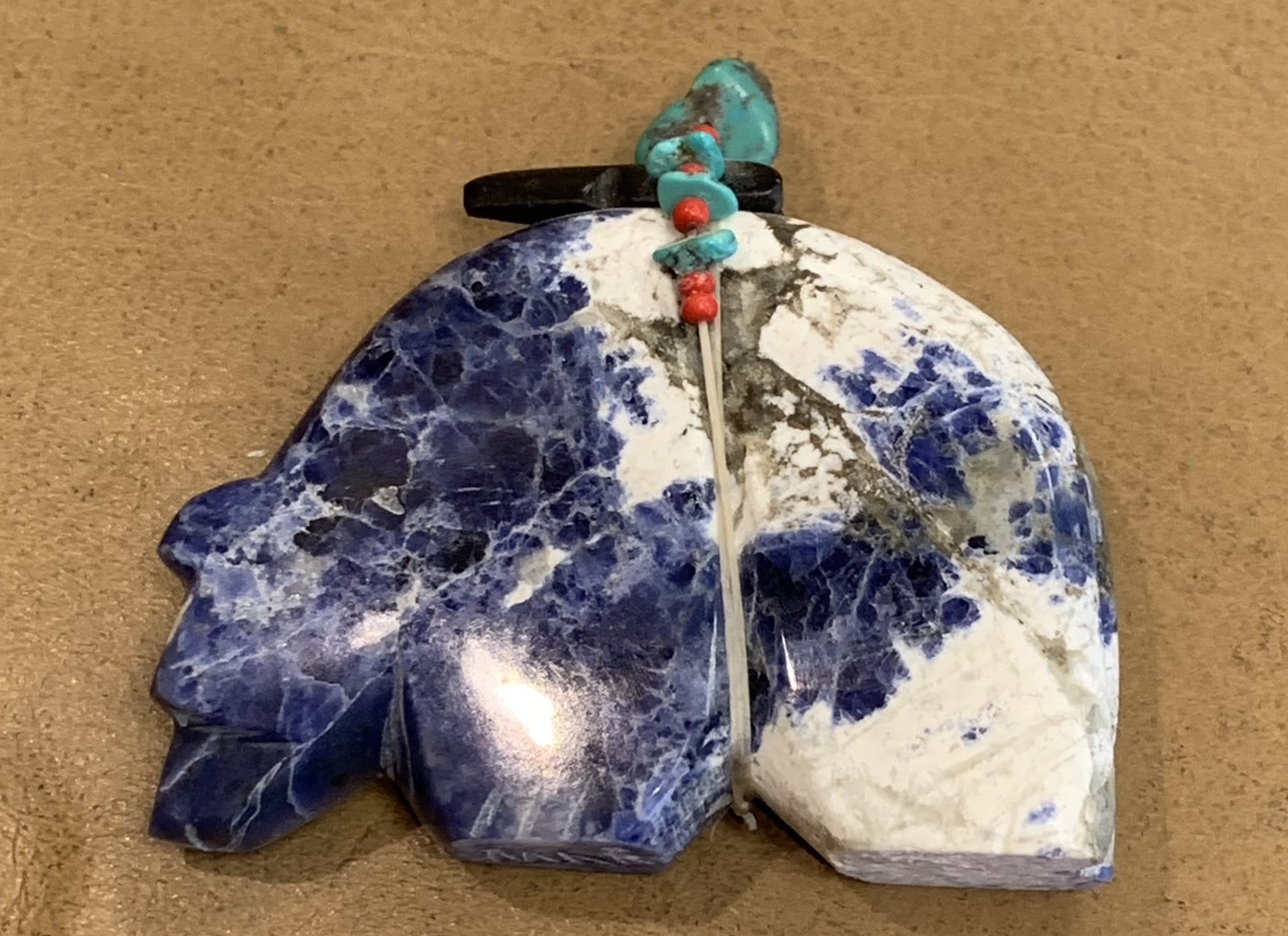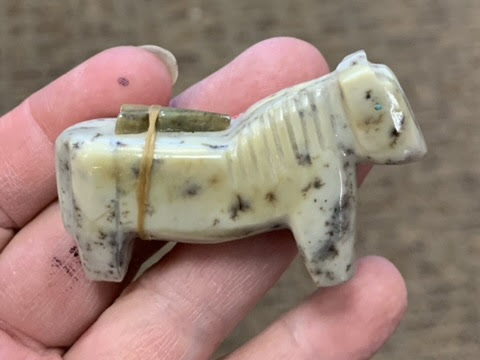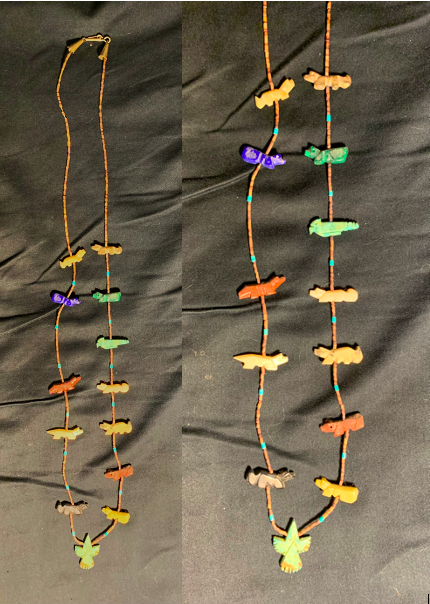Hand Carved Talismans
These little stone works of art from a past Beehive sale are known in English as Zuni Fetishes. They are based on a very old form of Native American religious talisman. The word ‘Fetish’ in this context is an earlier usage derived from the Latin facticius, ‘artificial’ and facere, ‘to make’; it denotes human-made objects imbued with holy protective powers; it definitely does not have anything to do with sexual proclivities.

The blue, grey and white carving is a bear, while the pale green/grey speckled carving can be identified as a horse by its nominal tail and inscribed lines representing its mane. These ‘Fetish’ carvings are always small; the horse is about the size of an adult thumb, while the bear could rest in the palm of your hand. The bear is most likely made of sodalite, while the material the stone horse is made of is harder to identify but may be tree agate, jasper or California jade (nephrite).

Look closely and you’ll see that the horse has tiny inset turquoise eyes. Both fetishes carry a symbolic arrowhead on their backs held on with sinew. The larger bear’s sinew is decorated with coral and turquoise beads. Many carved Zuni fetishes have arrowheads on their backs; it is a primary identifying characteristic of the art form. Others may have a “heart-line”, an inset arrow in contrasting stone arced along their body from their mouth to their heart.
It is important to emphasize the central role that religion plays in Zuni life, and therefore note that NONE of the carvings sold as Zuni fetishes are genuine religious articles, even though they are made by Zuni artists living on Zuni lands. True Zuni religious animal carvings, which have been blessed by a medicine man, are not sold commercially.

|
